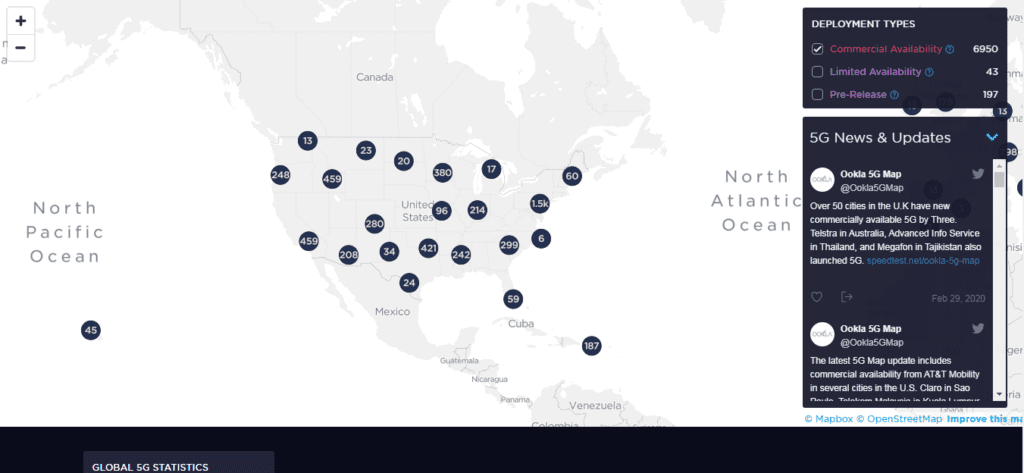Very best safest distance from a 5G cell Tower?

If you've ever walked through a town you might have noticed tiny cell towers for 5G on street light poles. They look like little boxes however, they're actually transmitting wireless signals from cell phone providers to your phone.
The smaller ones are being replaced by larger built cell towers. Although they're not as visible, they still can create problems for those who live nearby.
A Federal Communications Commission's Radiation Exposure Thresholds

The FCC's Radiation Exposure Thresholds define the safe limit at which one can expose to electromagnetic energy from wireless devices. The exposure limits are based on scientific data that show that RF energy can be harmful to health.
The specific absorption rate (SAR) is an indication of the radiofrequency energy that is absorbed by tissue. It's typically 1.6 Watts per kilogram spread over a gram of tissue.
Since 5g is able to transmit at higher frequencies and has the potential to create more energy on the skin and other exposed body parts. This could result in various possible harms, like the development of skin diseases such as dermatitis, cataracts, and skin cancer.
Due to the possible harmful effects of radiation from 5G, PSU has chosen to create a general maximum power density of four mW/cm2 averaged over 1 cm2, and never to exceed 30 minutes, for all 5G services at 3000 GHz. This localized limit is in accordance with the maximum SAR spatial-average of 1.6 W/kg, which is averaged over 1 5 grams of body tissue, at 6 GHz.
The FCC's Maximum Exposure Thresholds for Maximum Exposure
If you've ever operated a cell phone, you probably know that a safe range from the tower is around 400 meters away. This is because the power of transmission from the cell tower is significantly increased the farther your location from the tower.
Although this may sound like something that's good, the reality is that those living close to towers might be more susceptible to health problems. For example, a study from 2014 in India discovered that people who lived within 50m from cell towers suffered significantly more health complaints than those who were far from antennas.
But, the study found that people who moved to areas further away from the cell towers saw their symptoms improve within a few days. Other studies have revealed that exposure to high amounts of electromagnetic field radiofrequency (EMFs) could cause cancer, brain tumors and other health issues.
This is because RF radiation, which is utilized in wireless communication, can penetrate the body's outer layer, the skin. It is vital to be aware of this because the skin acts as a shield against injury to the body, infection from pathogenic microorganisms, as well as the entry of harmful substances. safe distance to live from cell phone tower is the most important organ of the human body. It is accountable for keeping the integrity of the other organs.
The FCC's Minimum Exposure Thresholds
The FCC's Minimum Exposure Thresholds rely on numerous assumptions that are not supported by scientific research. This includes the false assumption that short-term exposures to RF radiation are safe because of the minimal radiation penetration in the human body (i.e. the heating of tissues).
The assumption also ignores the deeper penetration of the ELF components of modulated RF signals as well as the effect of short bursts of heat generated by RF waves that are pulsed. These assumptions are not in line with current understanding of the biological consequences of RF radiation. As safe distance to live from cell phone tower , they should not be used for health protective exposure guidelines.
In addition, the ICNIRP and FCC limit their maximum limit of exposure to the local SARs that are based on the peak spatial specific absorption rate (psSAR) that is an inadequate dosimetric tool to assess the amount of radiation exposure. Particularly, psSAR is inaccurate for frequencies above 6 GHz. Furthermore, psSAR has not been tested for RF radiation exposed to other environmental agents such like sunlight. In Check out the post right here of interactions, RF radiations with different agents in the environment could cause synergistic or antagonistic results. This can lead to an increased risk of negative health adverse effects. For instance, exposure to RF radiation with sunlight may cause an increase in the incidence of developing skin cancer and exacerbate other skin diseases such as acne.
